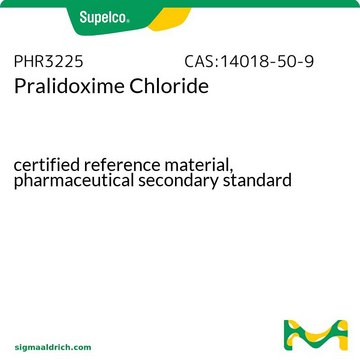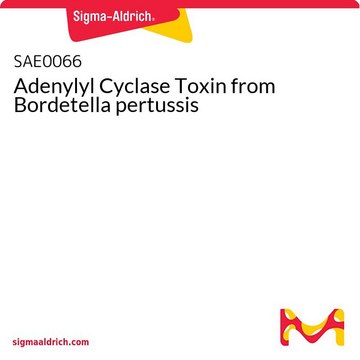Key Documents
SML0224
HI-6
≥98% (HPLC)
Synonim(y):
1-[[[4-(Aminocarbonyl)pyridinio]methoxy]methyl]-2-[(hydroxyimino)methyl]-pyridinium chloride, 4-Carbamoyl-1-[[[2-[(hydroxyimino)methyl]pyridinium-1-yl]methoxy]methyl]pyridinium dichloride, Asoxime chloride, HI 6, HI 6 chloride, HJ 6, Transant
About This Item
Polecane produkty
Próba
≥98% (HPLC)
Postać
powder
kolor
white to beige
rozpuszczalność
H2O: 15 mg/mL (clear solution)
Warunki transportu
wet ice
temp. przechowywania
−20°C
ciąg SMILES
[Cl-].[Cl-].NC(=O)c1cc[n+](COC[n+]2ccccc2\C=N\O)cc1
InChI
1S/C14H14N4O3.2ClH/c15-14(19)12-4-7-17(8-5-12)10-21-11-18-6-2-1-3-13(18)9-16-20;;/h1-9H,10-11H2,(H-,15,19);2*1H
Klucz InChI
QELSIJXWEROXOE-UHFFFAOYSA-N
Opis ogólny
Działania biochem./fizjol.
Kod klasy składowania
11 - Combustible Solids
Klasa zagrożenia wodnego (WGK)
WGK 3
Temperatura zapłonu (°F)
Not applicable
Temperatura zapłonu (°C)
Not applicable
Certyfikaty analizy (CoA)
Poszukaj Certyfikaty analizy (CoA), wpisując numer partii/serii produktów. Numery serii i partii można znaleźć na etykiecie produktu po słowach „seria” lub „partia”.
Masz już ten produkt?
Dokumenty związane z niedawno zakupionymi produktami zostały zamieszczone w Bibliotece dokumentów.
Nasz zespół naukowców ma doświadczenie we wszystkich obszarach badań, w tym w naukach przyrodniczych, materiałoznawstwie, syntezie chemicznej, chromatografii, analityce i wielu innych dziedzinach.
Skontaktuj się z zespołem ds. pomocy technicznej







